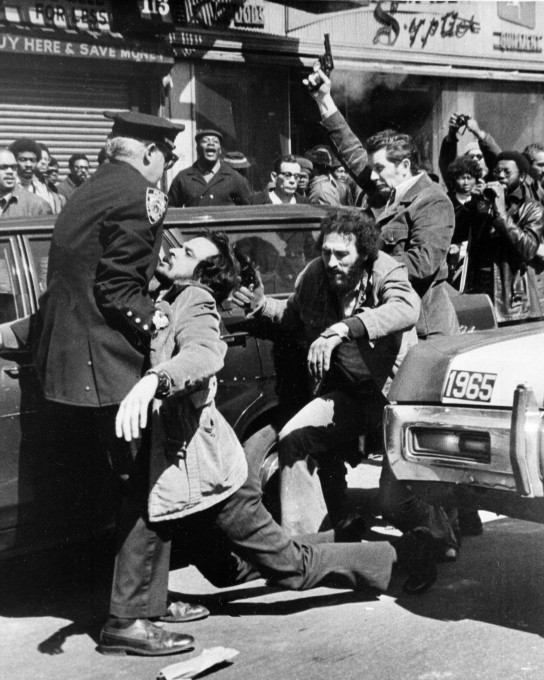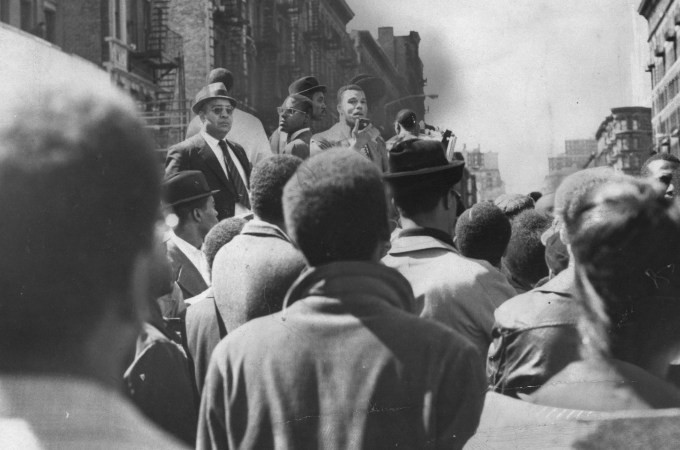Did an FBI call accidentally kill an NYPD officer?
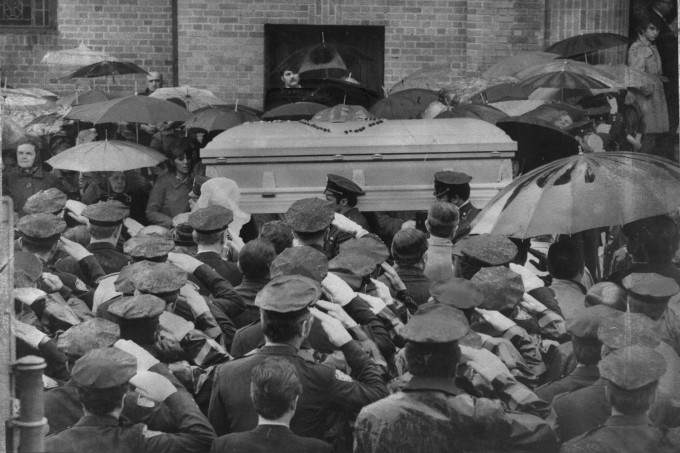
First published in the New York Post, April 19, 2015
Today, the Blue Knights Law Enforcement Motorcycle Club will ride in honor of Phillip Cardillo, an NYPD officer who was killed 43 years ago inside a Harlem mosque. Later this year, it’s expected that the street in front of the new police academy in Queens will be named after Cardillo.
It’s a belated honor for the only unsolved police killing in modern NYPD history — a case, writes investigative reporter Micah Morrison, that may have an unlikely culprit.
At 11:41 am, April 14, 1972, a call came into the NYPD’s communication division.
“Hello, this is Detective Thomas of the 28th Precinct.”
“Yeah.”
“I have a 10-13 West 116th Street.”
“102 West 116th?”
“Right, that’s on the second floor.”
“Second floor?”
“Right”
“Hold on.”
But the caller hung up.
A 10-13 is every cop’s worst nightmare, a red alert meaning “officer in distress.”
Chaos outside Mosque #7 in Harlem in 1972, an ambush that left Officer Phillip Cardillo dead.
Photo: AP
Two policemen, Phillip Cardillo and Vito Navarra, rushed to the address, which was the Muhammed Mosque #7 of the Nation of Islam. Its leader, Louis Farrakhan, had offices on the third floor.
The mosque doors, usually bolted shut and manned by the Nation of Islam’s own paramilitary force, the Fruit of Islam, were unlocked and unguarded.
In the reception area, Cardillo and Navarra encountered six men. Navarra darted up the stairs. Somewhere up on the second floor, he believed, a brother officer was in serious trouble. He was met by 10 men who forced him back down the stairs.
Nine more cops rushed into the reception area. A fight broke out.
All but three of the cops were forced from the mosque and the metal doors were slammed shut and locked. Cardillo and two other cops were left inside.
At 11:45 — less than five minutes after the fake 10-13 call — police radios reported an ominous new development: shots fired.
Officer Phillip Cardillo was mortally wounded.
The blue book
Muslim Minister Louis Farrakhan speaks to crowd outside the mosque, urging them to be calm following the clash.
Photo: New York Post
A year after the shooting, a secret internal NYPD review was conducted, known as the Blue Book.
According to the Blue Book, as cops forced their way back into the mosque, Cardillo and another officer were found “lying on the floor, both bloodied.” Cardillo had “received a gunshot wound on his right side during this attack, the bullet exiting from his left side.”
Backup had now arrived. Some of the officers pursued a “fleeing group into the basement, where approximately 16 [men] were located, frisked and detained.”
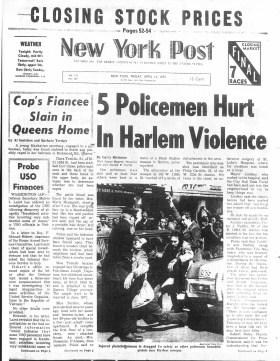
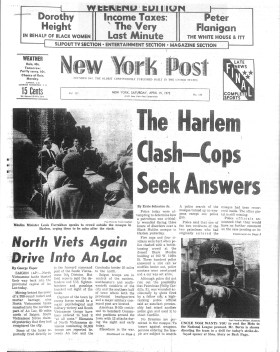
But the suspects “refused to answer questions and refused to identify themselves,” according to the Blue Book.
Meanwhile, outside, “the situation in the street deteriorated”to the point of potential riot.” A crowd had gathered, bricks were hurled from rooftops, vehicles were overturned and burned.
Farrakhan and Rep. Charlie Rangel appeared, while “other Muslims entered the basement and started screaming invectives at the officers and demanded the removal of all police officers from the mosque,” the Blue Book says.
One high-ranking officer at the scene, Chief of Detectives Albert Seedman, took charge.
Seedman said little about events in the basement for decades. He resigned soon after the incident. But in a 2011 preface to a new edition of his book, “Chief! Classic Cases from the Files of the Chief of Detectives,” he described what happened next.
Seedman said Rangel told him: “That crowd upstairs, they know you’re down here. I don’t know how long it will be before they come down. If you don’t leave now, I can’t guarantee your personal safety.”
Seedman was unfazed. He called in a request for backup. The NYPD had detailed plans to handle urban unrest. He was stunned by the response: request denied.
He said a superior officer “made it clear to me that we should abandon the mosque in order to minimize the threat of a possible riot.”
Seedman said he made a deal with Rangel: the NYPD would leave the mosque if Rangel promised to deliver the suspects to a local police station that afternoon.
Rangel agreed.
The NYPD withdrew from the mosque, leaving behind the crime scene, blood and ballistics evidence, and 16 suspects.
Rangel and the suspects never showed up.
Rangel has denied Seedman’s version of the events, but has never offered his own. He did not respond to interview requests.
Thwarted investigation
Detectives faced the near-impossible task of finding Cardillo’s killer. Witnesses were in the wind, and mosque workers had already mopped up the crime scene.
In 1973, detective Randy Jurgensen took over the case. Decades later, in his 2006 memoir “Circle of Six,” he would accuse members of the city’s political and police establishment of a “purposeful negligence of duty” in the Cardillo affair.
The grand jury led by the special prosecutor came to the same conclusion.
The Blue Book plays a key role in the case. Completed in 1973, the secret NYPD internal report — its official title is “Report and Analysis of the Muslim Mosque Incident of April 14, 1972” — is a detailed reconstruction of the Cardillo shooting and aftermath, with witness interviews, names of suspects, investigative leads, and a ballistics report.
According to the special prosecutor, however, “the Blue Book was only circulated within the upper ranks of the Police Department.”
“It had leads, it had witness names and a ballistics report,” said Jurgensen. “It would have been hugely important to our investigation. I never saw it.”
Despite these hurdles, investigators eventually zeroed in a suspect — Nation of Islam member Louis 17X Dupree.
But even then, the Blue Book appears to have been withheld from prosecutors at the Manhattan DA’s Office.
James Harmon was the lead prosecutor in both Dupree trials. “I do not have any recollection of ever seeing the Blue Book,” he said in a recent interview.
The lack of evidence hindered the prosecution. Dupree’s first trial resulted in a hung jury. In a second trial, Dupree, who now uses the name Khalid Elamin Ali, was acquitted.
‘Let’s get these bastards’
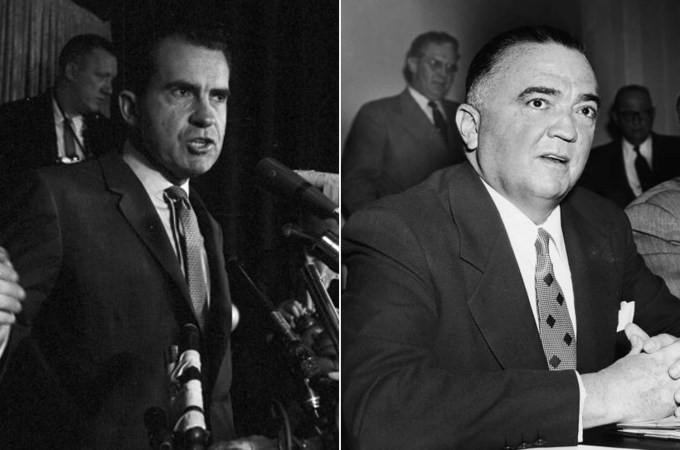
Whether or not Dupree pulled the trigger doesn’t answer the bigger question, however: Who lured Cardillo to his death?
The 10-13 call, it turns out, was a fake.
While there was an actual Detective Thomas working at the 28th Precinct, he didn’t make the call.
Who lured police to the second floor of the mosque, during a time of political and racial unrest, has never been answered.
Some believe it was a Nation of Islam member, trying to incite a confrontation.
Others note that prank calls were common at the time, and say some random person was trying to mess with the police.
But there’s another, disturbing possibility: The FBI.
In the 1960s and 1970s, the FBI was at war with America’s domestic enemies, real and imagined.
The FBI’s secret COINTELPRO counterintelligence program tried to disrupt and discredit many groups, including the Nation of Islam.
The concern went right to the top — to President Richard Nixon and FBI Director J. Edgar Hoover.
The COINTELPRO program was unmasked in 1971 and ordered closed down. But Nixon and Hoover directed that another secret program be launched in New York in response to the assassinations of police officers.
In an conversation recorded by the White House taping system and released by the Nixon Library, Nixon and Hoover discuss the brutal May 1971 assassination of New York City Police Officers Waverly Jones and Joseph Piagentini, gunned down in a Harlem ambush.
“By God, let’s get these bastards,” Nixon said to Hoover.
“I’ll go all out on the intelligence on this thing,” Hoover said.
“Go in with everything you’ve got,” Nixon said. “Surveillance, electronic and everything.”
The result, as T.J. English reported in his book, “The Savage City,” was a new joint effort by the FBI and the NYPD: Operation Newkill.
Operation Newkill “would be devoted solely to seeking out and taking down anyone even peripherally involved in the police shootings,” English wrote. “The NYPD liaison was Chief of Detectives Albert Seedman” — the same high-ranking NYPD official who would later take charge of the Cardillo case.
FBI resources would be poured into the NYPD, English reported. In return, Hoover demanded only one condition: complete secrecy.
“The FBI’s involvement would never be acknowledged,” English wrote.
A ‘pretext call’
Confidential FBI documents released under the Freedom of Information Act raise questions about the extent of the FBI’s involvement in the Cardillo affair.
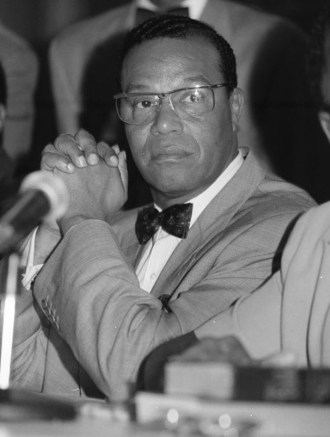
One COINTELPRO tactic was the use of anonymous or “pretext” phone calls — FBI agents posing as someone else — to disrupt targeted groups.
A February 1968 COINTELPRO memo from the FBI’s New York field office to headquarters seeks permission to make “anonymous and other pretext phone calls . . . to neutralize and frustrate the activities of these black nationalists.”
The anonymous phone calls could sow dissent (“there’s an informant in your ranks”) or even get the police to conduct raids and break up meetings.
Six targets are noted in the memo. Four of the names have been blacked out by FBI censors.
“Could that fake 10-13 call sending cops to the mosque have been an FBI ‘pretext call’ gone terribly wrong?” asks Jurgensen. “Or could the FBI have had a high-level informant inside the mosque who was somehow involved and has been protected all these years? I don’t know. Only the FBI knows. But look at the Whitey Bulger case in Boston — there’s a situation where an individual was both a killer and an FBI informant.”
Two COINTELPRO memos note the presence of “high-level NOI [Nation of Islam] informants” and “top-level sources” in the Nation of Islam.
A never-before-seen confidential FBI report on Cardillo’s suspected killer, Dupree, lists six “informants” related to the case. All the names are blacked out. Disclosure of sources, the memo noted, could “adversely affect the national defense interest of the US.”
The report shows that the FBI had kept close tabs on Dupree for years as he was “driving Louis Farrakhan, minister in charge of Mosque #7.”
The FBI declined several requests to discuss the COINTELPRO and other documents.
Dupree, now 75, lives in New York and is said to be in poor health. Cleared of Cardillo’s death in two jury trials, he is beyond the reach of the law. He did not respond to several interview requests. The Nation of Islam did not respond to requests for comment.
‘We didn’t know’
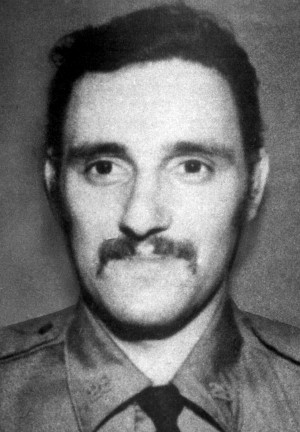
Battered by the Cardillo affair, Jurgensen retired from the NYPD in 1977. He is still haunted by unresolved questions.
“Somebody in authority had to order the guards off the doors of the mosque and leave them unlocked and unguarded,” he said. “And somebody with knowledge of police procedure and personnel had to make that 10-13 call” sending the NYPD to the mosque.
Harmon left the Manhattan District Attorney’s Office in 1977 to become a federal prosecutor. He later served as executive director of the President’s Commission on Organized Crime. He says the NYPD and FBI documents raise questions about the Cardillo case.
“We didn’t have this information when we tried the case in the 1970s,” he said. “We didn’t know about the Blue Book. We didn’t know about the FBI activities — the informants, the focus on the Nation of Islam.”
He too is haunted by the unsolved murder. He thinks there is one last hope to solve the case: the secret files of the FBI.
“Today, the unanswered question is: Does the FBI have any information in its informant, wiretap and electronic surveillance records pertaining to the shooting of Officer Cardillo?”
